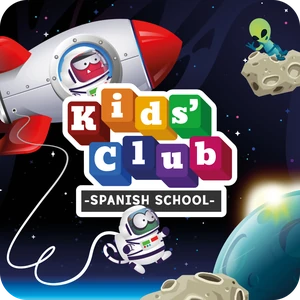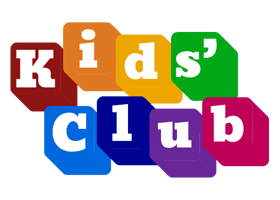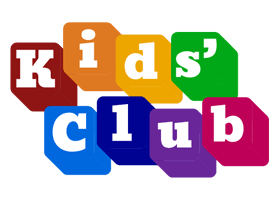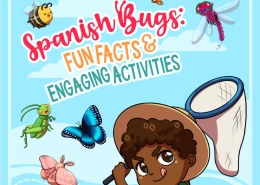 Kids' Club Spanish School, LLC
https://kidsclubspanishschool.com/wp-content/uploads/2024/07/blog_summer-spanish-activities-for-kids-3.png
807
800
Alexis Fishbaugh
https://cdnwp.kidsclubspanishschool.com/wp-content/uploads/2025/05/kids-club-spanish-school-header-logo.webp
Alexis Fishbaugh2024-07-28 22:48:532024-07-28 22:48:53Summer Spanish Activities for Kids
Kids' Club Spanish School, LLC
https://kidsclubspanishschool.com/wp-content/uploads/2024/07/blog_summer-spanish-activities-for-kids-3.png
807
800
Alexis Fishbaugh
https://cdnwp.kidsclubspanishschool.com/wp-content/uploads/2025/05/kids-club-spanish-school-header-logo.webp
Alexis Fishbaugh2024-07-28 22:48:532024-07-28 22:48:53Summer Spanish Activities for KidsLEARN SPANISH
How does One Decide which Variant of Spanish to Learn?
So you have decided to Learn Spanish? It may sound like an easy decision to make, as Spanish is one of the most spoken languages in the world, but with over 20 countries speaking Spanish as their official language and millions more speaking it as a second language, you can imagine that there could be many different variants of Spanish spoken. So how does one decide which variant of Spanish to learn?
Today we will talk about the different variants, what makes one variant of Spanish different from another and how significant this difference can be and how that can affect one who is learning Spanish.
Castilian Spanish or “Castellano”
“Castellano” refers to an area located in Central and Northern Spain. This is where the Spanish language was born. This area was called the Castilla Empire in the middle ages. At the time that Queen Isabel of Castilla and Fernando of Aragon joined forces to unite the region of Castilla and Aragón (North Eastern present day Spain) and slowly began taking over other parts of what is present day Spain, this whole area, spoke many different languages, including different forms of Arabic, Celtic and vulgar Latin. The Catholic kingdoms then spread to include most regions in the Iberian Peninsula, and Castillian Spanish was declared the official dialect.
“Translating from one language to another, unless it is from Greek and Latin, the queens of all languages, is like looking at Flemish tapestries from the wrong side, for although the figures are visible, they are covered by threads that obscure them, and cannot be seen with the smoothness and color of the right side.”
– Miguel de Cervantes, Don Quixote
Latin American Spanish
When Christopher Columbus sailed to the Americas he brought Castellano with him. This language was established as the official language of the territory. Many scholars refer to this occurrence as hispanization or “hispanización” of the Americas.
This process was not easy. Even though Castellano was imposed upon the Americas by Spain, the land was vast and the local languages already spoken there were starkly different. With the help of the Catholic Church, the Spanish set up learning centers that taught Catholicism in Castellano to the people in the colonies. This helped the language spread and the natives began to learn Spanish. Nonetheless, Castellano blended with, and was influenced by, local existing languages. This influence manifests itself in the different accents and some varying vocabulary throughout present day Latin America.
Explorers who left Spain for the Americas, mostly to look for riches or to discover new lands, were mostly from the more Southern areas in Spain, such as Extremadura and Andalucia. These explorers were more influential in shaping the language in these parts and this is why you will find a more similar accent, pronunciation, vocabulary and grammatical structures between these areas in Spain and Latin American Spanish as the natives of this area learned Spanish from these explorers.
“When Christopher Columbus sailed to the Americas he brought Castilian Spanish with him. This language was established as the official language of the territory. ”
Another reason why you can find differences in vocabulary, grammar and pronunciation between Castellano and Latin American Spanish language is due to the fact that the language, has in some ways, been frozen in time from when it was transplanted to the Americas. Latin American Spanish has preserved some of the original sounds, vocabulary and grammar of the medieval language that it once was. Of course it has modernized, but in a different way than Castellano Spanish has.
For example, the word for “You”, in formal Spanish for both Castellano and Latin America Spanish is “Usted”. However, the informal “You” form has evolved differently from Spain in some Latin American countries. “Vos” was used to refer to “You” in medieval times in Spain when speaking to someone of a much higher rank than the speaker. This was the language spoken by the conquistadores when arriving in the Americas. It has since disappeared in Spain and been replaced completely by “Usted”. However, it has stayed in Latin American, taking on a much more informal context, in countries like Argentina, that had less of a connection to the Spanish Empire and was not necessarily as influenced by their changing fashions. This is also true of the word for “You plural”, in an informal sense, which is “Vosotros”. “Vosotros” began to be used over time in Spain; however, as it only appeared after the conquest of the Americas so Latin America did not acquire this word and uses the old “Ustedes” still to this day for both the formal “You plural” and the more familiar “You plural”. It is interesting to see how these language traits, and others, have been in a way, frozen in time, being maintained in Latin American and yet disappearing in Spain, or appearing in Spain but, due to distance and disconnect, not being adopted in Latin America.
“By prevailing over all obstacles and distractions, one may unfailingly arrive at his chosen goal or destination.“– Christopher Columbus
In conclusion, the Spanish spoken in present day Latin America, is a result of the Southern Spain Castellano, being greatly influenced by the different native languages that were spoken at the time in the area and some linguistic characteristics that have been maintained from medieval Spanish, when in Spain they have changed throughout time.
Is Castellano a different language from Spanish?
Many people say that Spanish derived from Castellano, but I would like to make clear that this is not true. Castellano and Spanish are the same language. It could be compared to the difference between British English and American English. It is still the same language, just with some differences in pronunciation, accent, vocabulary and grammar.
To what extend are Spanish and Castellano different?
Spanish and Castellano are much more the same than they are different. One could say that the differences could be compared to British English and American English, as English went through a similar process in the United States and Canada. Spanish and Castellano have different pronunciations for many words and some differing vocabulary and grammar in some instances. Some of these differences might seem big, however, just like when someone from Britain says they are “going to the loo”, we Americans understand them without issue.
So why distinguish Castellano from Spanish?
People started using the word “Spanish” once all the kingdoms were unified to form the Kingdom of Spain and it no longer seem relevant to continue to say “Castellano” when Castilla no longer existed. This language was now the official language of a new country called Spain, however once a word is widely used sometimes it doesn’t disappear so easily and Castellano is still used.
In present day Spain you will hear people referring to their language as both Castellano and Español interchangeably (although Castellano is preferred). However, someone from outside of Spain will not refer to their language as Castellano, and will only refer to it as Spanish, understanding that Castellano only refers to the variety of Spanish spoken in Spain (with the exception of a few Latin American countries such as Venezuela and Chile).
“Even though there are differences, similar to differences that can be found between a Californian and a New Yorker speaking English, someone from one part of Latin America can very easily understand someone else speaking Spanish from another entirely different part of the territory.”
Spanish differences throughout present day Latin America
The differences in language spoken throughout the Americas is notable, however not to so much of an extent. Due to the enormity of the territory and the different histories of the countries, as is with most large areas, where a single language is spoken, such as the United States, there are many variants of accents, vocabulary and grammatical structures used in different parts of Latin America. Even though there are differences, similar to differences that can be found between a Californian and a New Yorker speaking English, someone from one part of Latin America can very easily understand someone else speaking Spanish from another entirely different part of the territory. The language is still considered Spanish regardless of the differences each region could have when speaking it. And just as an Ecuadorian can easily understand someone from Spain and vice versa, a Mexican has the same ease understanding their Guatemalan neighbors.
“Just remember, when someone has an accent, it means that he knows one more language than you do.”– Sidney Sheldon
When I learn Spanish, what Spanish should I learn?
It is very important to note that, when speaking one variant to another person who speaks a different variant, the two speakers can understand each other fully. Just as we stated above, the different variants can be compared to English, in the way that an American can understand a British person fully, as well as someone from California can understand someone from New York. So it may be safe to say that you can choose any variant you please and be assured that the Spanish you learn will be valid across all regions.
One thing should be noted though. Imagine you have never ever, not once, been exposed to or heard an Australian accent. Imagine that all of a sudden, your company has transferred you to their Australian office. It could be a challenge for you to understand your co-workers once you arrive. This is even more so with a foreign language. Imagine you had learned Spanish from only Mexican teachers but yet were being transferred by your office to Colombia to work. You might wish that you had had more of a variety of teachers when learning Spanish, in order for your ear to have become accustomed to the different accents and ways of speaking.
In conclusion, we have learned that when learning Spanish, it does not matter what variant you learn, you will be understood by all Spanish speakers, whether you learned Castilian Spanish, learned Mexican Spanish or learned Argentinian Spanish. What may be very important though, is that one makes sure to get exposure to the differences in order not to have a handicap when being confronted with a different variant at some point in time.
“When learning Spanish, it does not matter what variant you learn, you will be understood by all Spanish speakers.”
This is why Kids’ Club Spanish School is such a great program because we offer the chance for your children to learn Spanish from many different teachers from many different Spanish speaking countries across the globe. We try to use the most neutral Spanish possible, when creating our curriculum, so that the children are learning the most commonly used words. For example, in Spain the word “colegio” is the most common word for “school”, however, throughout the rest of the Spanish speaking world “escuela” is more prevalent, and “escuela” will still be understood in Spain even though it is not the most commonly used term for school. Kids’ Club Spanish School wants to make sure that the language your child does learn with us, when learning Spanish, is the most commonly used across the board, ensuring they receive the best and most useful experience.
Sign up for Kids’ Club Spanish School and check out how quickly your child learns Castellano, or the more commonly used term “Español”!







 Kids' Club Spanish School, LLC
Kids' Club Spanish School, LLC Kids' Club Spanish School, SL
Kids' Club Spanish School, SL Kids' Club Spanish School, LLC
Kids' Club Spanish School, LLC

